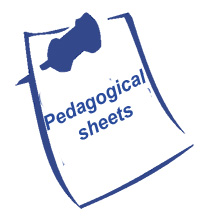To begin the course, offer 3 minutes activity exercises from the book Kathy Paterson in order to generate interest...
Example: "Everyone sits, puts their hands on the table and settles down comfortably. The head can be placed on the arms ...... for 2 minutes: absolute calm
Objectives
- Learn to better recognize, understand the learning difficulties and working methods encountered by S.E.N. students;
- Analyze various supports of the existing professional practices: diagnosis used in schools to inform of possible known disorders. Study of various individualized projects, personalized from various partners. Identify the purposes that would lead to a better knowledge of the S.E.N. student and how the teacher can use it in his teaching practice;
Reflect on his practice and identify areas for improvement to be implemented on a daily basis alone and / or in a multidisciplinary team (pupils, teachers, parents, educators, directorates, etc.) in order to support S.E.N. students

SECTION OF THE MODULE /E
Description of the learning process
Towards a transdisciplinary approach that requires the participation of teachers, the educational team, management, parents and psychological assistance present at the school
Animation of the exchanges on the basis of 4 axes:
- 1. The importance and usefulness of a professional diagnosis
- 2. Some concrete examples of diagnoses
- 3. Some thoughts on the diagnosis
-4. Develop a good practice using the ERASMUS + project model
The individual learning plan is a tool:
- dynamic and a tool of constant continuity that follows the student throughout his schooling;
- construction of a project for and with the student. This construction is part of an educational project whose purpose is the life project of the student;
- information, decision and regulation in the service of the Council of Class. It is a project of the multidisciplinary team based on the conclusions of the class council and related to the school project;
- active communication with the student and parents (educators) who are partners of the multidisciplinary team;
- collaboration with the school's external partners, (medical,social services);
- which makes it possible to draw up an inventory of the development of the pupil, with a view to making a diagnostic evaluation;
The process requires team ownership and a spirit of creativity.
It is about developing, within the school, a working philosophy where the team sets itself up to help the overall development of the child entrusted to it.